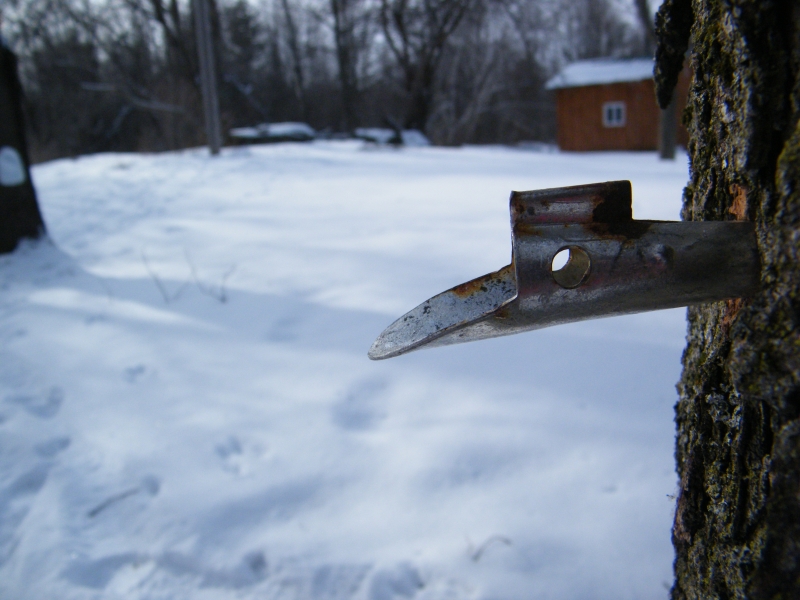
North Country explorer from Canton
The temperature was below freezing (24° F or -6° C) when this tap was photographed. We didn't get any sap that day.
It seems like a waste to go a day without production during the short sugaring season, but then again maybe not. This cold day was preceded by warm days, and followed by warm days: a warm-cold cycle that leads to optimal production. While this cycle works best when the days are warm and the nights are cold, a cold day surrounded by warm days is by no means a loss.
Why is this warm-cold cycle so important? It all has to do with how sap flows in a tree. When the temperature is cold, the “insides” of a tree are cold and contract. This creates negative pressure inside the tree, which draws water from the ground, replenishing the tree's sap stores. When the next warm day comes there is positive pressure inside the tree and sap flows freely.

